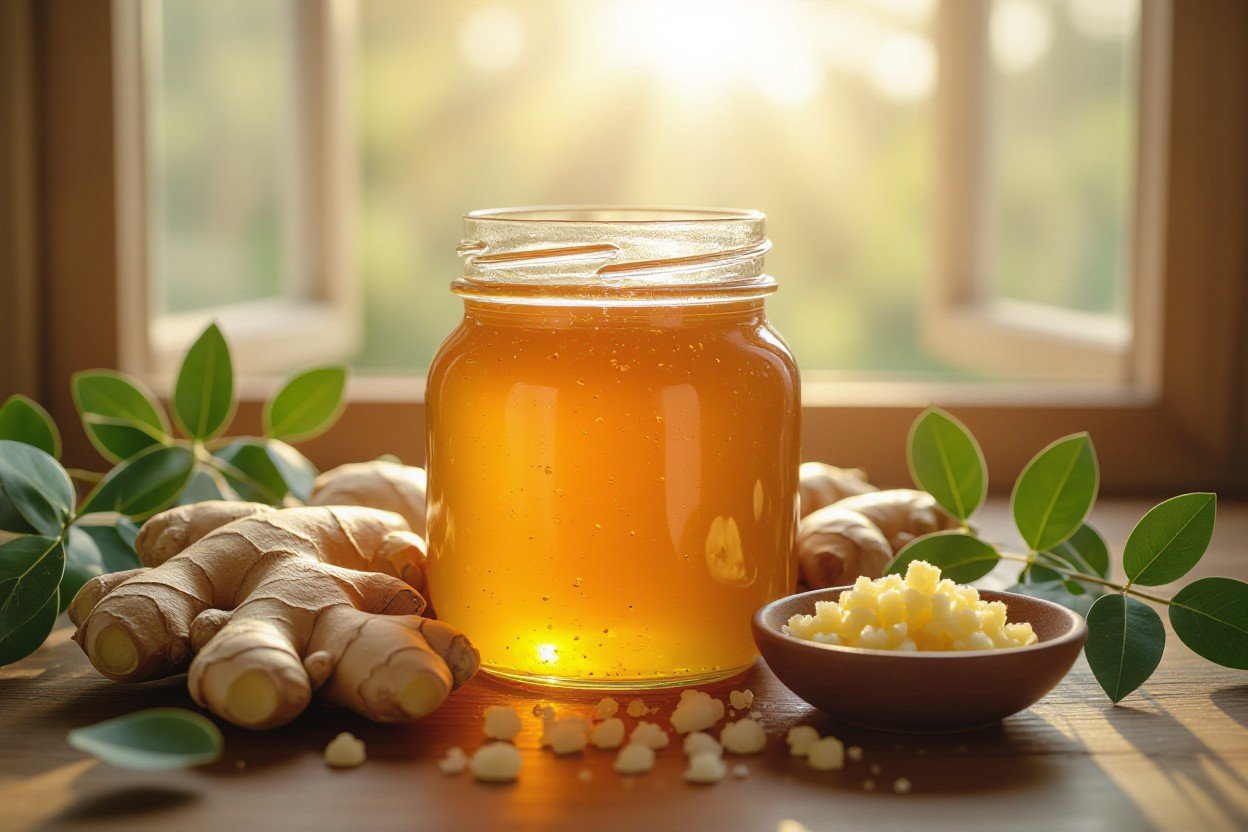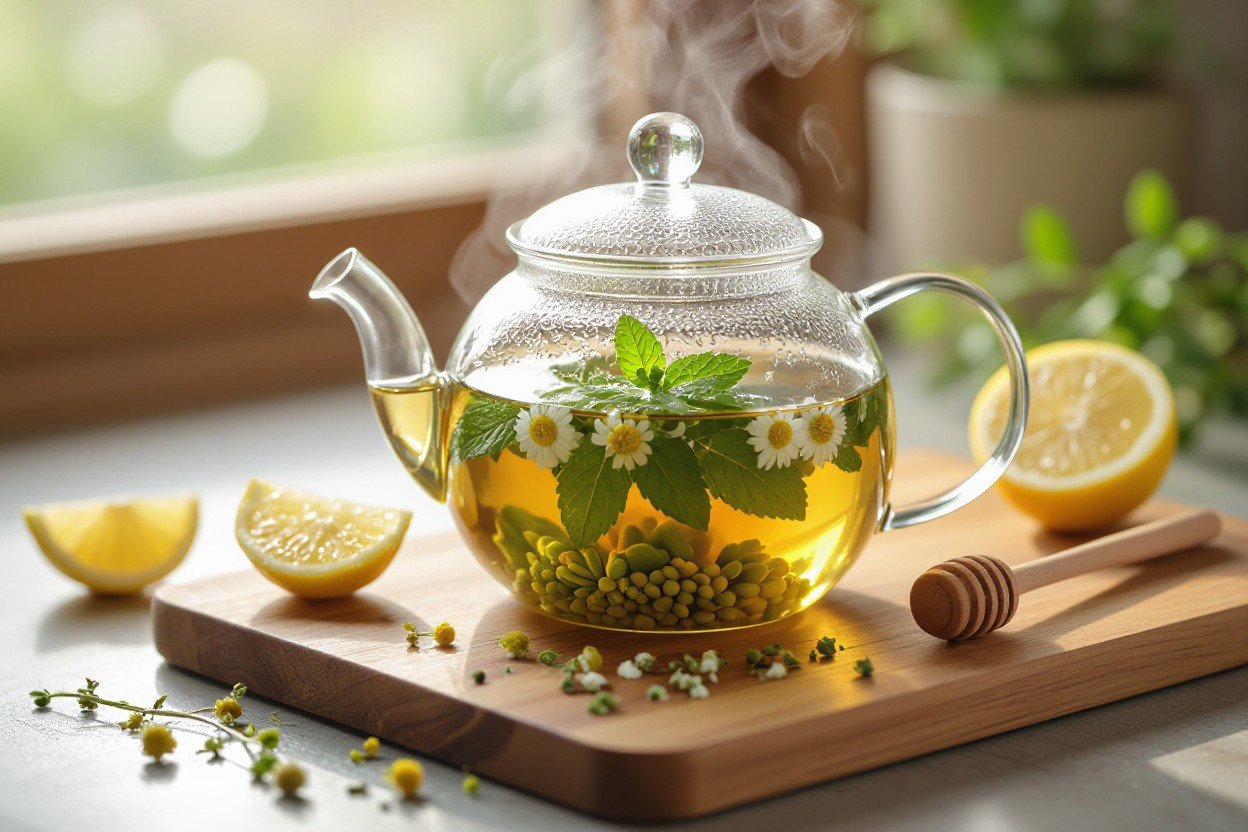There’s a range of gentle, natural ingredients that can help open your airways and ease breathing without harsh side effects, and this short guide shows you simple ways to use eucalyptus, peppermint, ginger and other botanicals safely so you can breathe easier at home or while traveling.
why choose natural airway openers
You may prefer natural options because they often offer soothing relief, fewer systemic reactions, and easy at-home use. Many ingredients work by loosening mucus, reducing irritation, or opening nasal passages, making them useful for mild congestion and seasonal issues across the us, uk, canada and australia.
top natural ingredients that open airways
eucalyptus
You can inhale eucalyptus steam or use diluted oil in a diffuser to help clear nasal passages; its vapors may support easier breathing and are widely available in local pharmacies and health stores.
peppermint
Menthol in peppermint can create a cooling, opening sensation in your airways; try peppermint tea or inhalation of diluted oil for quick relief when you feel congested.
ginger
Ginger tea can ease inflammation and promote airflow; you can steep fresh slices or use powdered ginger with honey and lemon to soothe your throat and support breathing.
lavender
Lavender steam or mild inhalation can relax airways and ease breathing discomfort while promoting calm, which may help you breathe more freely during sleep.
honey and lemon
Warm honey and lemon in tea soothes irritated airways and helps thin mucus, offering gentle, natural support for clearer breathing.
how to use them safely
Always dilute important oils before topical use, test a small skin patch first, and avoid oils near young children or pets. Use steam inhalation for short periods, sip herbal teas warm, and avoid swallowing undiluted oils. If you have asthma, heart disease, or take medication, check with your healthcare provider before trying new remedies.
where to find them locally and online
You can buy these ingredients at health food stores, supermarkets, and local apothecaries across major cities, or order trusted brands online — buy online.
quick tips for best results
Use consistent, moderate doses, combine steam and tea for relief, keep humidifiers clean, and avoid smoking or strong irritants that counteract natural remedies.
when to seek professional help
If you experience severe shortness of breath, high fever, chest pain, or symptoms that worsen or persist, seek medical care promptly to ensure proper diagnosis and treatment.
With careful, informed use, you can try these natural options to support clearer breathing and fewer side effects while staying attentive to how your body responds.
Understanding Airway Blockages
Mucus plugs, smooth muscle tightening, swelling of the airway lining and structural narrowing all reduce airway diameter; halving the radius can increase airflow resistance about 16-fold by Poiseuille’s law, so small changes hit breathing hard. You often notice wheeze, shortness of breath or reduced exercise tolerance when cilia function and mucus viscosity are out of balance, especially during viral infections or high pollen days in urban areas.
What Causes Airway Restrictions?
Allergens like dust mites and pollen trigger immune-driven swelling, while air pollution (PM2.5 above the US EPA standard of 12 µg/m3) and tobacco smoke irritate tissues and impair clearance. Viral bronchitis and bacterial infections thicken secretions; gastroesophageal reflux and obesity can mechanically or chemically worsen narrowing. In the United States about 25 million people live with asthma, where bronchospasm and inflammation combine to limit airflow.
Importance of Healthy Airways
Good airway function preserves oxygen delivery, supports exercise and stabilizes sleep by preventing nighttime awakenings from breathlessness. You can use peak flow monitoring: drops of 15–20% often signal worsening control and higher risk of emergency visits. Maintaining airway health also lowers daily reliance on rescue inhalers and improves work and activity performance, especially if you live in high-pollen or high-pollution regions.
Tracking trends matters: log symptoms, peak flow and exposure days to spot patterns before exacerbations. Simple lifestyle steps—hydration, reducing indoor allergens, and specific natural supports such as ginger, turmeric and eucalyptus—can ease mucus and soothe airways; for options and tools you can learn more.
Natural Ingredients to Consider
Thyme: A Nature’s Remedy
Thyme contains thymol and carvacrol, compounds shown to act as mild expectorants and antispasmodics; clinical trials in Europe using thyme-ivy syrups reported faster cough relief and improved breathing within days. You can steep 1–2 teaspoons of dried thyme in hot water for 5–10 minutes and drink 2–3 times daily, or choose standardized throat syrups available at pharmacies across the United States and the UK for consistent dosing.
Peppermint: Refreshing Relief
Peppermint delivers menthol, which stimulates cold receptors (TRPM8) to create an immediate sensation of clearer airways; inhaling steam with 1–2 drops of diluted peppermint oil or using a 1–2% chest rub can ease breathing perception within minutes. You’ll find menthol lozenges and vital oils widely sold in North America and Europe, commonly used for quick, noninvasive relief when congestion flares.
Further research shows menthol often improves subjective airflow even when objective nasal resistance is unchanged; randomized studies and consumer trials used low-concentration inhalation or lozenges rather than high-dose topical application. If you try steam inhalation, add 1–2 drops of oil to a bowl of hot water and inhale for short intervals, or select commercially prepared menthol products for reproducible results; avoid undiluted oil on skin and consult local guidelines for use with children. shop natural inhalation tools

The Role of Honey
Honey’s thick, sticky texture forms a protective film that soothes irritated airways and reduces cough reflex sensitivity; clinical trials show single doses of 1–2 teaspoons at night can reduce cough frequency and improve sleep compared with placebo in children over 1 year and adults. You can use a teaspoon dissolved in warm water or tea for quick relief; see product here.
Soothing and Calming Effects
Viscous honey coats mucous membranes, lowering mechanical irritation and calming the urge to cough, and its antioxidant flavonoids help reduce local inflammation. You’ll feel relief within 20–30 minutes after a spoonful, and many people report improved nighttime breathing and fewer awakenings; avoid giving honey to infants under 1 year due to botulism risk.
Antimicrobial Benefits
Honey inhibits microbial growth through high osmolarity, low pH (around 3.2–4.5), and enzyme-generated hydrogen peroxide when diluted; manuka honey adds non-peroxide activity from methylglyoxal (MGO), with commercial MGO ratings commonly from 100–800 mg/kg linked to stronger in vitro activity against Staphylococcus aureus and some resistant strains.
Medical-grade honeys (for example, manuka with a UMF or MGO rating) are used topically in wound care because their antimicrobial action persists even when hydrogen peroxide is neutralized. You can use standard culinary honey for cough relief and mild antisepsis, but choose UMF/MGO-labeled manuka if you need documented non-peroxide potency; dosing and product selection vary by region, so look for certified labels in your local market.
Essential Oils for Clear Airways
Many people rely on inhalation to ease congestion and support clearer airways: you can use steam inhalation, a diffuser, or a chest rub with properly diluted oil. Focus on oils high in volatile compounds that thin mucus or calm respiratory-driven anxiety; diffuse for 10–30 minutes or use 2–4 drops in a steam bowl for 5–10 minutes. Adjust methods for children and pets in your home.
Eucalyptus: Breathing Easy
Eucalyptus oil, rich in 1,8-cineole (often 60–85%), acts as a mucolytic and mild bronchodilator when inhaled; studies and clinical reports highlight its role in easing congestion. For home use, try 2–4 drops in a steam inhalation for 5–10 minutes or diffuse 3–5 drops for 15–20 minutes. Avoid undiluted topical application and skip eucalyptus for infants under two years.
Lavender: Relaxation and Relief
Lavender contains linalool (roughly 20–45%) and linalyl acetate (about 25–46%), which lower sympathetic activity and can reduce anxiety-related breathlessness; inhaling lavender for 10 minutes often reduces heart rate and perceived stress in trials. Diffuse 3–5 drops or inhale from a tissue for quick calming effects before sleep or during panic-induced breathing difficulty.
To deepen the lavender approach, blend lavender with eucalyptus (1:1) for both mucous-thinning and calming benefits, and follow safe dilution: 1–2% for adults (6–12 drops per 30 ml carrier) for topical rubs on the chest. Use shorter diffusion sessions (15–20 minutes) in small rooms, and if you live in urban areas like New York or London, run the diffuser in the evening to counteract pollutant-triggered irritation; you can buy a diffuser to get started.

Herbal Teas and Infusions
Steeped remedies you can make at home often deliver fast, gentle airway support; aim for 1–3 cups daily depending on ingredients and sensitivity. Local spice markets and farmers’ markets in the US and Europe commonly carry fresh roots and organic powders so you can craft teas with controlled steep times (8–12 minutes for roots, 4–6 for leaves) and pairings like black pepper or lemon to boost absorption and taste.
Ginger: Warm and Inviting Support
Fresh ginger contains gingerols and shogaols that relax bronchial muscles and thin mucus; try 1–2 grams sliced per cup, simmered 5–10 minutes, then add honey and lemon for soothing effects. Clinical and laboratory research supports ginger’s bronchodilator action, and many people report reduced wheeze after 1–2 cups daily; avoid large doses if you’re on anticoagulants and consult your provider for interactions.
Turmeric: A Powerful Ally
Curcumin in turmeric acts as a potent anti-inflammatory that can reduce airway swelling; combine ½–1 teaspoon turmeric powder with a pinch of black pepper and a fat source (milk or coconut oil) to increase absorption, and sip once or twice daily. Standardized supplements often concentrate curcuminoids to therapeutic levels, but culinary use in teas or “golden milk” provides steady, gentle exposure that many people find helpful.
Deeper practical notes: clinical and preclinical studies link curcumin to reduced markers of airway inflammation (lower IL-6 and TNF-alpha in several trials) and modest improvements in respiratory symptoms; typical supplemental dosing in human trials ranges from 500 to 2,000 mg of curcumin per day, often delivered with piperine or a lipid carrier to enhance bioavailability. You can choose a tea approach—mix 1 teaspoon turmeric with warm milk and 1/8 teaspoon black pepper—or a standardized extract for consistent dosing; if you prefer a vetted product, consider options to buy turmeric supplements that list curcuminoid percentage and third-party testing.
Lifestyle Tips for Healthy Airways
Focus on targeted daily habits that reduce irritants and strengthen airway resilience: control indoor humidity (40–50%), swap to fragrance-free cleaning products, and time outdoor activity around local pollen forecasts. Use a HEPA air purifier during high-pollen days and avoid smoke exposure. Check natural support options like Natural Remedies for Asthma and Allergy Symptoms for plant-based ideas.
- Run a HEPA filter in bedrooms during pollen season.
- Wash bedding weekly in hot water to cut dust mites.
- Exercise when local pollen counts are lowest (early evening in many cities).
- Track air quality index (AQI) for your area before outdoor plans.
Perceiving seasonal and urban triggers in your city helps you adapt daily routines to keep your airways clearer.
Hydration: The Key to Open Airways
Drink 1.5–2 liters of fluids daily, increasing with exercise or heat, to thin mucus and ease airflow; warm teas with ginger or lemon can soothe bronchioles. Use a humidifier when indoor air drops below 40%, and consider a reliable model—product link—to maintain optimal humidity in dry climates like London winters or continental summers.
Breathing Exercises: Find Your Rhythm
Practice diaphragmatic breathing for 5–10 minutes twice daily to lower breathing rate and improve oxygen exchange; try 4–6 second inhales and 6–8 second exhales, aiming for about six breaths per minute to reduce airway resistance and calm symptoms during flare-ups.
Start seated with one hand on your chest and one on your abdomen, inhaling through the nose so your belly rises, then exhale slowly through pursed lips; build to three sessions daily and stop if you feel lightheaded, progressing by adding 1–2 minutes each week as comfort improves.
Natural ingredients that help open airways
Many people in the United States, Canada, the UK, and Australia seek gentle, drug-free ways to ease mild airway tightness. Ingredients like eucalyptus, peppermint, ginger, turmeric, and omega-3 rich oils can support clearer breathing when used correctly. Combine inhalation, warm teas, steam, and dietary choices with proper hydration and breathing techniques to maximize benefits. Always check local regulations and consult a healthcare professional for persistent or severe symptoms.
how these ingredients work
Eucalyptus and peppermint provide cooling vapors that soothe airways; ginger and turmeric offer anti-inflammatory properties; omega-3 fats support overall respiratory health. Together with controlled breathing and humidified air, these approaches can reduce irritation and support easier airflow.
top safe options and simple uses
- Eucalyptus oil: inhalation of diluted steam for short periods.
- Peppermint: aromatherapy or a mint tea to open nasal passages.
- Ginger: fresh tea or warm infusions to ease throat and airway discomfort.
- Turmeric: added to meals or golden milk for gentle inflammation support.
- Omega-3 oils: dietary sources like fatty fish or supplements for daily support.
breathing techniques and environment
Practice diaphragmatic breathing and pursed lip breathing to improve airflow. Use a humidifier in dry climates and avoid smoke, strong pollutants, and known allergens in your area. Local weather and pollen levels in your city can affect which remedies work best.
where to find quality products
Choose reputable brands, check ingredient lists, and buy from trusted retailers. For a starting product, see this product link: product link.
Final Words
Hence you can explore mild, natural options like steam with eucalyptus, ginger tea, and omega-3 rich foods to help open your airways without harsh side effects, while keeping an eye on local air quality and consulting a professional if your breathing does not improve.

